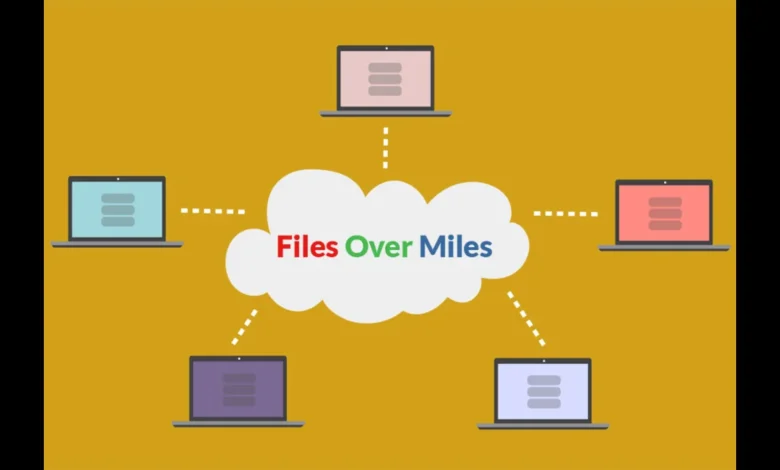Files Over Miles: Tips and Tools for Efficient Remote File Transfer

Introduction to Remote File Transfer
In today’s fast-paced world, the ability to transfer files seamlessly across distances is more crucial than ever. Whether you’re a remote worker sending an important presentation or a team collaborating on a project across continents, efficient file transfer can make all the difference. The phrase “files over miles” perfectly encapsulates this modern necessity—overcoming physical distance with just a few clicks. But while technology has made it easier than ever to share documents and media, navigating the landscape of remote file sharing can come with its own set of challenges. So, how do you ensure that your files arrive safely and promptly? Let’s explore some practical tips and tools that will help you master the art of transferring files over miles.
Advantages and Challenges of Remote File Transfer
Remote file transfer offers numerous advantages that can streamline workflows. The ability to share files across long distances fosters collaboration among teams spread around the globe. This connectivity boosts productivity and enhances communication.
However, challenges come with this convenience. Slow internet speeds may hinder large file transfers, leading to frustration for users who rely on quick access to data. Additionally, varying compatibility issues between systems can complicate the sharing process.
Security concerns also play a crucial role in remote file transfer. With sensitive information flying through the digital ether, organizations must prioritize data protection to safeguard against breaches and unauthorized access.
Reliance on technology means potential disruptions files over miles due to outages or technical glitches can disrupt operations and lead to missed deadlines. Balancing these advantages and challenges is essential for efficient remote file management.
Popular Tools for Remote File Transfer
When it comes to transferring files over miles, several tools stand out for their efficiency and user-friendliness.
Dropbox is a favorite among many. It allows seamless sharing and syncing of files across devices, making collaboration effortless.
Google Drive is another powerful option. With ample storage files over miles space and integration with Google Workspace, it’s ideal for teams that rely on real-time editing.
For those seeking enhanced security, services like Tresorit offer end-to-end encryption. This ensures that sensitive information remains private during transfer.
WeTransfer makes sending large files straightforward without the need for an account. Its simple interface appeals to users who want quick transfers without complications.
FTP clients like FileZilla remain popular among tech-savvy individuals. files over miles They provide robust options for managing file uploads and downloads with precision. Each tool caters to different needs—choose wisely based on your specific requirements!
Tips for Efficient Remote File Transfer
To make remote file transfer smooth, start by choosing the right tool for your needs. Consider factors like speed, user interface, and compatibility with various devices.
Next, organize files before you upload them. Use clear naming conventions and categorize documents logically to save time during transfers.
Always check your internet connection quality. A stable connection reduces interruptions and ensures faster uploads or downloads.
If you’re transferring large files, compress them first. This not only speeds up the process but also saves bandwidth.
Schedule transfers during off-peak hours when network traffic is lower. files over miles You’ll enjoy better speeds without competing for bandwidth.
Keep backups of important files on different storage systems or cloud services to prevent data loss in case something goes wrong during transfer.
Security Measures for Remote File Transfer files over miles
When transferring files over miles, security should be a top priority. After all, sensitive information is often at stake.
First and foremost, use encryption. This ensures that your data remains unreadable during transit. Look for tools that offer end-to-end encryption to keep prying eyes away from your files.
Employ secure connections as well. Utilize VPNs or SSL/TLS protocols to create a files over miles safe channel for file transfers. These technologies help protect against interception and unauthorized access.
Be vigilant about access control too. Limit who can send or receive files based on their roles within the organization. Implement strong password policies to add another layer of protection.
Regularly update software and applications used for file transfer. Outdated programs can harbor vulnerabilities that cybercriminals exploit easily.
Consider using two-factor authentication (2FA). It adds an extra step in verifying identities before granting access—making it harder for anyone else to infiltrate your systems without permission.
The Future of Remote File Transfer
The future of remote file transfer is poised for rapid evolution. As technology advances, we can expect faster speeds and increased efficiency. Emerging technologies like 5G networks will enable seamless transfers, even with large files.
Artificial intelligence will also play a significant role. AI algorithms can optimize files over miles data routing, making transfers smoother and more reliable. This means users won’t have to worry about delays or dropped connections.
Cloud computing continues to shape the landscape as well. With decentralized storage options, accessing files from anywhere becomes effortless. Collaboration tools are becoming more integrated into these platforms, enhancing teamwork across distances.
As remote work becomes the norm rather than the exception, innovative protocols will emerge to streamline processes further. The way we handle digital assets is set for transformation in ways we’re only beginning to imagine.
Conclusion
Remote file transfer has become an integral part of our digital lives. The ability files over miles to send and receive files from anywhere in the world is a game-changer for businesses, freelancers, and individuals alike. While there are undeniable advantages—like flexibility and increased productivity—there are also challenges that need addressing.
With numerous tools available today, finding the right one can streamline your workflow significantly. By implementing efficient practices and prioritizing security measures, you can enhance your remote file transfer experience.
Looking ahead, advancements in technology will likely continue to shape this space. As we adapt to new tools and techniques, staying informed about best practices will empower us all to navigate our increasingly connected world with ease. Embracing these changes means embracing files over miles growth—both personally and professionally—in our quest for seamless communication across distances.





